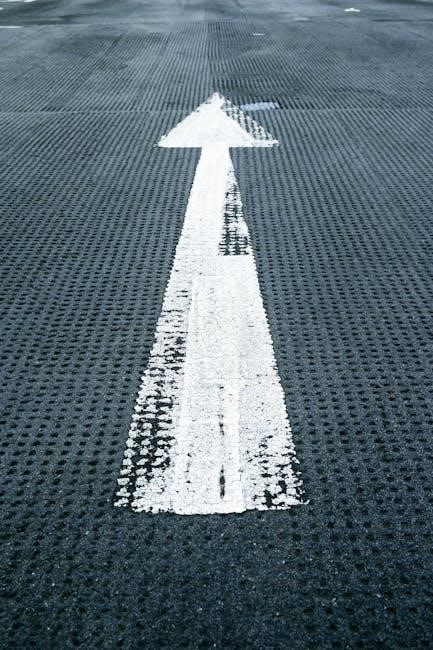Skimboarding is an exhilarating beach sport combining speed and skill, where the right board size is crucial for optimal performance and a thrilling experience on water.
What is Skimboarding?
Skimboarding is an exciting beach sport that combines elements of surfing and skateboarding. It involves riding a small, flat board on shallow water or sand, typically near the ocean’s edge. Skimboarders glide across the water’s surface, performing tricks and maneuvers. The sport emphasizes speed, balance, and control, making it both challenging and rewarding. Whether riding waves or flatland, the right board size is essential for performance and enjoyment, ensuring stability and maneuverability for riders of all skill levels.
Why Board Size Matters for Performance
Board size significantly impacts a skimboarder’s performance, affecting speed, stability, and control. A board that is too small may lack stability, while one that is too large can be difficult to maneuver. The right size ensures optimal glide and responsiveness, allowing riders to perform tricks or ride waves effectively. Proper sizing also enhances comfort and confidence, making it easier to progress in the sport. Choosing the correct size is essential for maximizing fun and achieving the best results on the water.

Skimboard Size Chart: A General Guide
A skimboard size chart typically outlines standard lengths (48″-60″) and widths (20″-24″), tailored to rider height, weight, and skill level for optimal performance and control.
Standard Skimboard Lengths and Widths
Standard skimboards typically range in length from 48″ to 60″ and in width from 20″ to 24″. These dimensions are tailored to the rider’s height, weight, and skill level, ensuring optimal performance. Longer boards offer more stability and speed, while shorter boards provide better maneuverability for tricks and tight turns. The width affects floatation and control, with wider boards being more forgiving for beginners. Materials like wood, fiberglass, or carbon fiber also influence size and flexibility, making the right dimensions crucial for a seamless riding experience.
Weight and Height Recommendations
Choosing the right skimboard size depends on both the rider’s height and weight. Generally, taller and heavier riders require longer and wider boards for stability, while shorter and lighter riders prefer shorter, more maneuverable boards. For example, a rider under 5’2″ and 110 lbs might opt for a 48″-52″ board, while someone over 6’0″ and 160 lbs could benefit from a 56″-60″ board. Proper sizing ensures better control, speed, and overall performance, making the riding experience more enjoyable and effective for all skill levels.

Factors Influencing Skimboard Size
Factors influencing skimboard size include skill level, riding style, weight, height, and material, each playing a crucial role in selecting the ideal board for performance.
Rider’s Height and Weight
A rider’s height and weight are critical factors in determining the ideal skimboard size. Taller riders typically require longer boards for stability, while shorter riders benefit from shorter boards for easier control. Weight also plays a significant role, as heavier riders may need larger, sturdier boards for buoyancy, whereas lighter riders can maneuver smaller boards more effectively. Balancing these elements ensures optimal performance and comfort on the water, making it essential to consider both metrics when selecting a skimboard.
Skill Level: Beginner, Intermediate, Advanced
Skill Level: Beginner, Intermediate, Advanced
Beginners benefit from larger, softer-top boards for stability and buoyancy, making it easier to balance and catch waves. Intermediate riders can transition to smaller, more responsive boards, allowing for sharper turns and tricks. Advanced skimboarders prefer high-performance boards with precise rocker and materials, enabling superior speed and maneuverability. Tailoring the board size to skill level ensures progression, as riders develop strength, balance, and technique over time.
Cheap vs. High-Performance Boards
Cheap skimboards, often made of wood or basic materials, are durable and suitable for casual riding, offering affordability for beginners. High-performance boards, crafted from advanced materials like carbon fiber, provide lightweight, responsive, and faster rides, ideal for skilled riders. The choice between cost-effective and premium boards depends on budget, riding frequency, and desired performance level, balancing affordability with features that enhance speed, maneuverability, and overall skimboarding experience.
Riding Style: Flatland, Waves, or Tricks
Your riding style significantly impacts the ideal skimboard size. Flatland riders often prefer shorter, wider boards for stability and maneuverability on sand or flat surfaces. Wave riders benefit from longer, narrower boards that generate speed and glide effortlessly across water. Trick-oriented riders may opt for mid-sized boards, balancing speed and agility for performing flips and spins. Tailoring your board size to your riding style ensures optimal performance and enjoyment, whether carving waves or mastering tricks.

Skimboard Materials and Their Impact on Size
Skimboard materials, such as wood, fiberglass, or carbon fiber, influence size, weight, and flexibility, affecting performance and rider experience. Material choice tailors the board to specific needs and preferences.
Types of Materials: Wood, Fiberglass, Carbon Fiber
Skimboards are crafted from various materials, each offering unique performance characteristics. Wood is traditional, durable, and offers a smooth ride, while fiberglass is lightweight and flexible, ideal for tricks. Carbon fiber boards are high-performance, stiff, and responsive, favored by advanced riders. The choice of material significantly impacts the board’s weight, durability, and maneuverability, making it essential to select the right one based on skill level and riding style for an optimal skimboarding experience.
How Material Affects Board Size and Flexibility
The material of a skimboard significantly influences its size and flexibility. Wood offers durability but is heavier, often requiring a slightly larger size for buoyancy. Fiberglass is lightweight and flexible, allowing for smaller, more maneuverable boards. Carbon fiber is stiff and responsive, enabling smaller boards to perform at high speeds. The material’s weight and flexibility dictate the optimal size, ensuring the board meets the rider’s needs for speed, control, and performance in various conditions.

Popular Skimboard Brands and Their Size Options
Top brands like Zap Skimboards, Exile Skimboards, and Victoria Skimboards offer a range of sizes to suit different rider preferences, ensuring optimal performance for all skill levels.
Top Brands in the Market
Zap Skimboards, Exile Skimboards, and Victoria Skimboards are among the most renowned brands, offering high-quality boards tailored to various riding styles and skill levels. Zap Skimboards is a favorite for its durability and performance, while Exile Skimboards excels in innovative designs. Victoria Skimboards, known for its traditional wooden construction, provides a classic feel. These brands cater to both beginners and advanced riders, ensuring a wide range of size options to match individual preferences and riding conditions, making them top choices for skimboard enthusiasts worldwide.
Size Variations Across Different Brands
Skimboard brands often vary in their size offerings to cater to different riding styles and preferences. Some brands focus on longer boards for speed and stability, while others prioritize shorter, more maneuverable options for tricks. Width and thickness also differ, with some brands offering wider boards for beginners and narrower ones for advanced riders. These variations ensure that riders can find a board that aligns with their skill level, riding style, and personal comfort, making each brand unique in its approach to skimboard design and functionality.
Skimboard Maintenance and Upkeep
Regular maintenance ensures longevity and performance. Clean your board after use, store it in a dry place, and avoid extreme temperatures to preserve its condition and responsiveness.
How to Measure and Check Board Dimensions
To ensure accuracy, measure the skimboard’s length from tip to tail using a tape measure. For width, measure across the widest point, typically at the midpoint. Thickness, though less critical, can indicate wear. Place the board on a flat surface to avoid rocker affecting measurements. Record these dimensions to monitor for damage or alterations. Regular checks help maintain performance and fit, aligning with the rider’s height and weight for optimal use. Store the board properly to prevent shape changes.
Tips for Keeping Your Skimboard in Prime Condition
Regularly inspect your skimboard for dings, cracks, or delamination. Clean the surface with mild soap and fresh water to remove dirt and salt. Avoid exposure to direct sunlight for prolonged periods to prevent warping. Store the board in a cool, dry place, away from heavy objects. Use a soft, padded bag for transport to prevent scratches. Wax the board periodically to maintain its glide and protect the finish. These practices ensure longevity, optimal performance, and consistent riding quality over time.

Skimboard Size for Learning and Progression
Skimboard size plays a crucial role in learning and progression, ensuring stability for beginners while allowing advanced riders to refine techniques and enjoy dynamic performance.
Choosing the Right Size for Beginners
For beginners, selecting the right skimboard size is essential for stability and ease of learning. A board that is too small may be difficult to balance on, while one that is too large can be hard to maneuver. Generally, a skimboard between 44 and 48 inches in length and 19 to 21 inches in width is ideal for most newcomers. This size range provides enough buoyancy and stability, allowing riders to focus on proper technique and build confidence. Riders should also consider their height and weight to ensure the board feels balanced underfoot. A softer, more durable material, such as wood, is often recommended for beginners, as it is more forgiving during falls and mishaps. By starting with the right size and material, new riders can progress more quickly and enjoy the sport from the outset.
Upgrading Your Board as You Improve
As riders gain experience and confidence, they may find that their current board no longer meets their needs. Upgrading to a higher-performance skimboard can enhance speed, maneuverability, and trick execution. Generally, more advanced riders prefer shorter, narrower boards for tighter turns and tricks, while wave riders might opt for slightly longer boards. The decision to upgrade should consider the rider’s height, weight, and riding style. Transitioning to a stiffer, lighter material, such as carbon fiber, can also improve performance. Riders should test different sizes and styles before committing to a new board to ensure the best fit for their evolving skills.

Advanced Tips for Selecting the Perfect Skimboard
Advanced riders should consider custom boards tailored to their riding style and performance needs. Testing different sizes and materials ensures the best fit for skill level and preferences.
Custom vs. Off-the-Shelf Boards
Custom skimboards offer tailored dimensions, materials, and flex for specific riding styles, enhancing performance. Off-the-shelf boards provide affordability and accessibility for most riders. Custom boards are pricier but deliver superior fit and durability, while off-the-shelf options are ready-to-ride and suitable for skill levels. Riders seeking precision should opt for custom, while off-the-shelf boards are ideal for those prioritizing convenience and budget. Both options cater to unique preferences, ensuring a personalized skimboarding experience.
Testing Before Buying: Rentals and Demos
Testing a skimboard before purchasing ensures the right fit for your style and needs. Rentals and demos allow you to try different sizes, materials, and shapes firsthand. This hands-on experience helps you gauge how a board performs in real conditions, preventing costly mistakes. Many brands offer demo days or rental options, giving you the chance to compare models and find the perfect match. It’s a valuable step for riders of all skill levels, ensuring satisfaction and optimal performance on the water.
Selecting the right skimboard size is crucial for maximizing performance and enjoyment. By understanding your needs and testing options, you’ll find the perfect board to enhance your experience on the water.
Final Thoughts on Skimboard Size Selection
Choosing the right skimboard size is vital for optimal performance and enjoyment. Consider your height, weight, skill level, and riding style to ensure the best fit. Beginners may prefer larger, stable boards, while advanced riders might opt for smaller, maneuverable options. Remember, there’s no one-size-fits-all solution—experiment and seek advice to find your ideal board. As you progress, your preferences may evolve, so stay open to adjusting your size choice for better results.
Encouragement to Get on the Water
Now that you’ve found the perfect skimboard size, it’s time to embrace the thrill of the sport! Whether you’re gliding across flat sand or catching waves, skimboarding offers endless fun and challenges. Remember, practice is key—start small, build your skills, and enjoy the journey. Every session is a chance to improve and connect with nature. Grab your board, hit the beach, and let the water inspire you to keep shredding and soaking up the sun. The ocean awaits!




Leave a Reply
You must be logged in to post a comment.